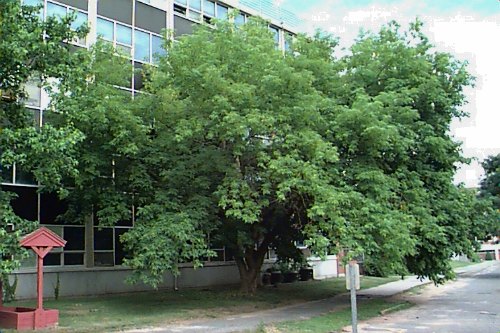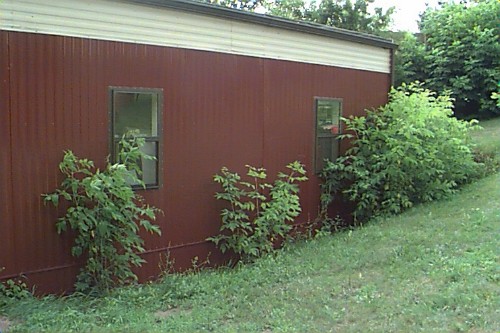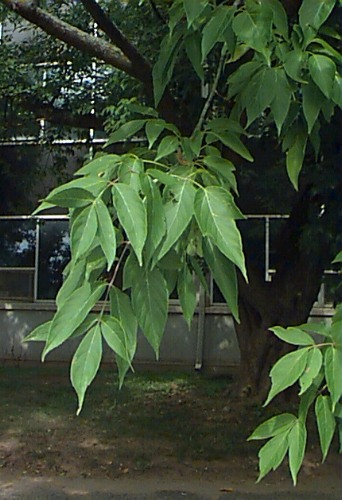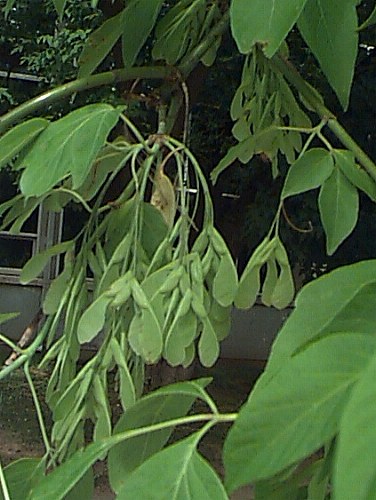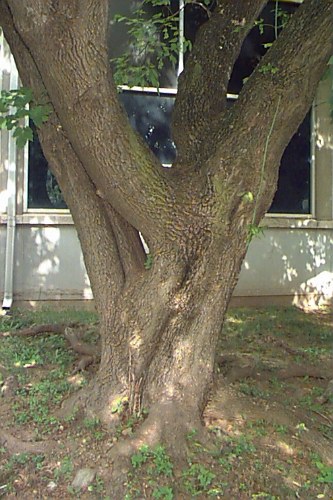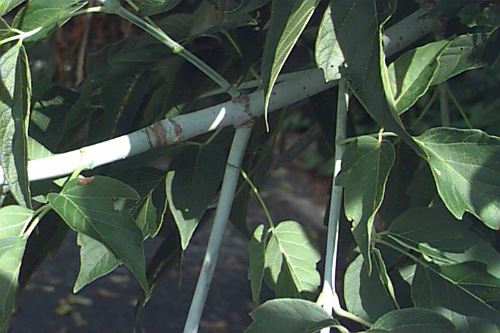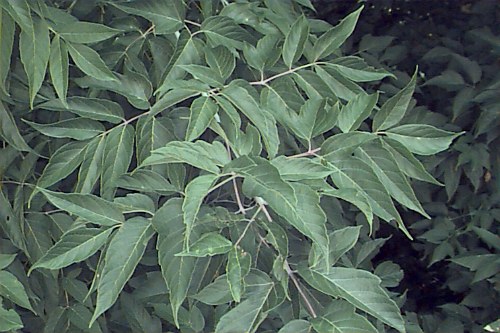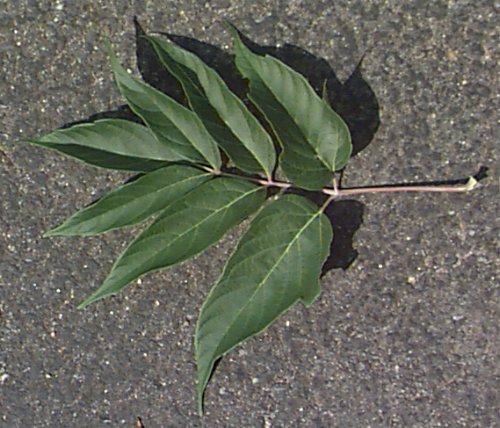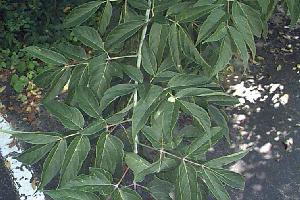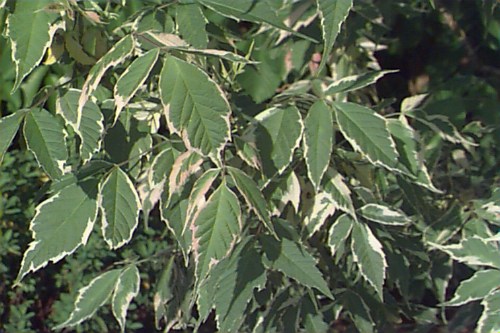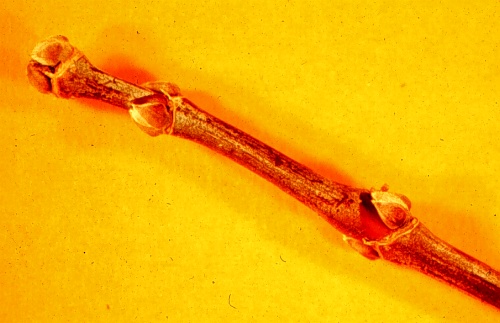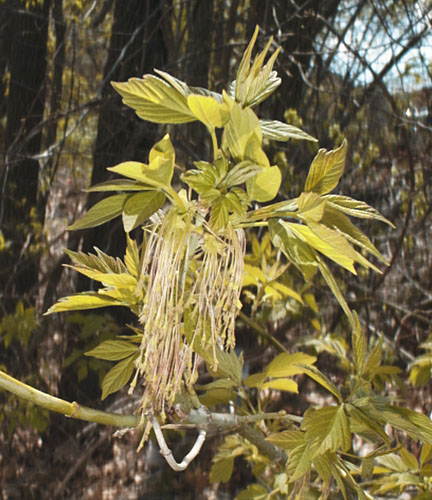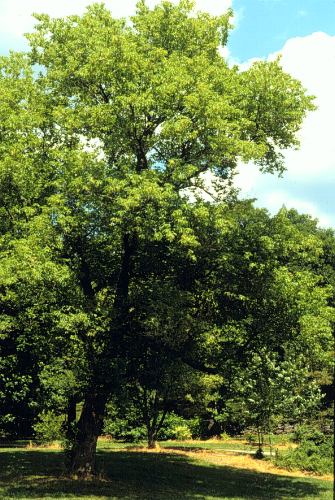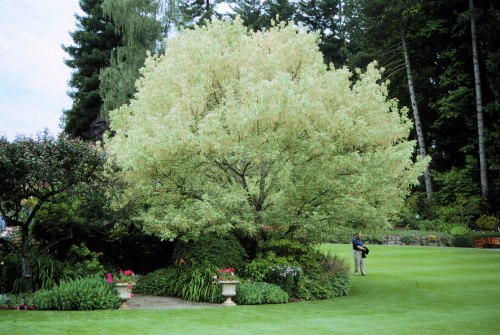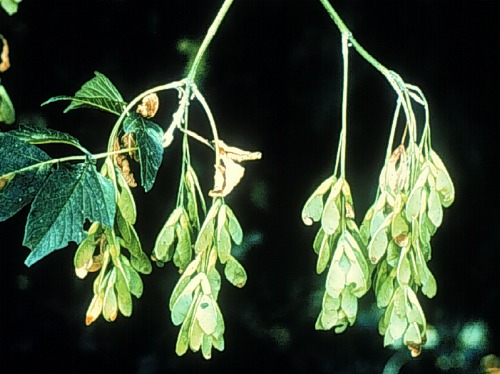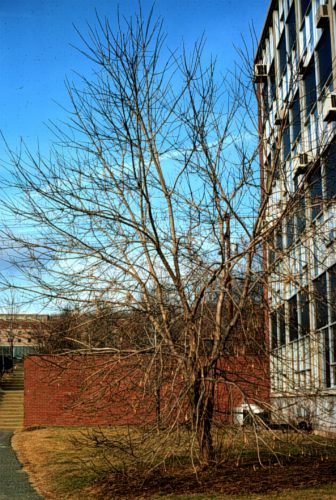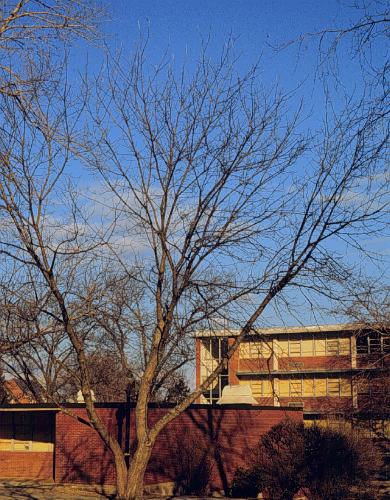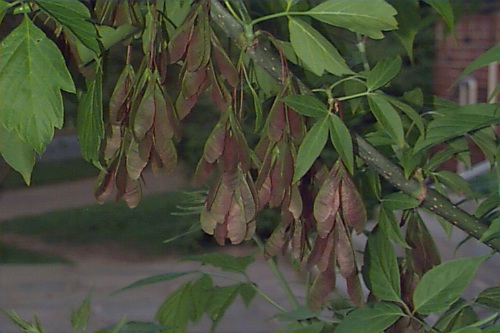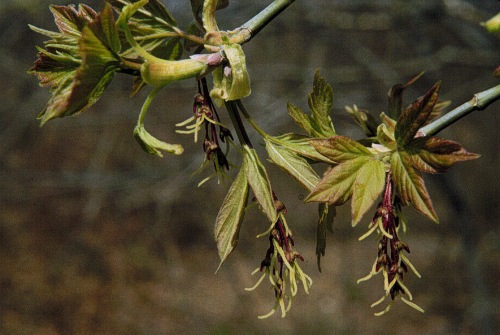Acer negundo
Boxelder, Ash-leaved Maple
Aceraceae
ExpandHabitat
- native to North America: most common in the Mississippi Valley, but range extends from New York State and southern Canada to the eastern foothills of the Rockies
- occurs natively on stream banks, edges of swamps and lake shores
- zone 2
Habit and Form
- a medium shade tree
- deciduous
- irregular, spreading upright crown
- 30' to 60' tall
- coarse texture
- extremely fast-growing, especially when young
Summer Foliage
- opposite, pinnately-compound leaves with 3 to 9 leaflets, each leaflet 2" to 4" long; petiole 2" to 3" long
- light green color above, gray-green below
Autumn Foliage
- one of the earliest maples to color
- yellow-green to very pale yellow, often brownish
- not very ornamental
Flowers
- March to April
- yellowish green and abundant
- dioecious: male flowers in clusters, female in pendulous racemes
Fruit
- samara, set in pairs at a narrow angle
- September to October
- profuse; persist into winter
Bark
- gray-brown, ordinary-looking
- slightly ridged
- new shoots have a waxy bloom and appear blue or white mixed with green
Culture
- transplants easily
- performs well on poor, wet or dry sites, in areas or soils of extreme pH levels; withstands flooding
Landscape Uses
- an "alley cat" tree
- often used in shelterbelt plantings in the Northwest
- has possibilities on difficult sites and areas that flood seasonally
- huge flocks of migratory birds (Evening Grosbeak, Cedar Waxwing) usually strip all seeds from this tree as they pass through
Liabilities
- susceptible to a wide range of diseases and insect pests: leaf spot diseases (anthracnose can be extreme in rainy weather); cankers, sapstreak and trunk decay; caterpillars (including forest tent caterpillar, green striped maple worms; boxelder bug; assorted leafhoppers, borers, mites, aphids and scales. Trunks can "weep" from internal decay for 15 years or more before the tree disintegrates in a storm.
- seeds germinate well, creating a weed problem
- weak wood breaks easily in storms
- a short-lived tree
ID Features
- pinnately compound leaves resemble those of Fraxinus, but leaflets are irregularly shaped
- green twigs with reddish brown upper surface have waxy bloom that can be rubbed off
- broken twig has a strong, acrid smell
- buds covered with silky white hairs
- white, solid pith in twigs
Propagation
- by seed
- softwood cuttings root easily; useful for cultivars
Cultivars/Varieties
'Auratum' - A fine form with intense yellow leaves. Color may fade in areas with hot, humid summers.
'Flamingo' - A highly promoted cultivar with mature leaves that resemble 'Variegatum'. The new growth, however, emerges bright pink for an interesting effect in spring. This effect can be enhanced by pruning the plant to promote vigorous shoot extensions.
'Kelly's Gold' - Another form with bright gold leaves often sold by specialty catalogs.
'Variegatum' - (Silver Leaf Boxelder) - A noteworthy small, variegated tree. Leaves have a broad, white margin; fruits also variegated. Can throw a green or totally white shoot on occasion, so prune these out. A female clone. Best in zone 5 or warmer.
'Violaceum' - Selected to capitalize on the attractive, glaucous waxy coating on the youg branches of this species. This form features young shoots that are deep purple with a pronounced bloomy coating. Otherwise similar to the species.
